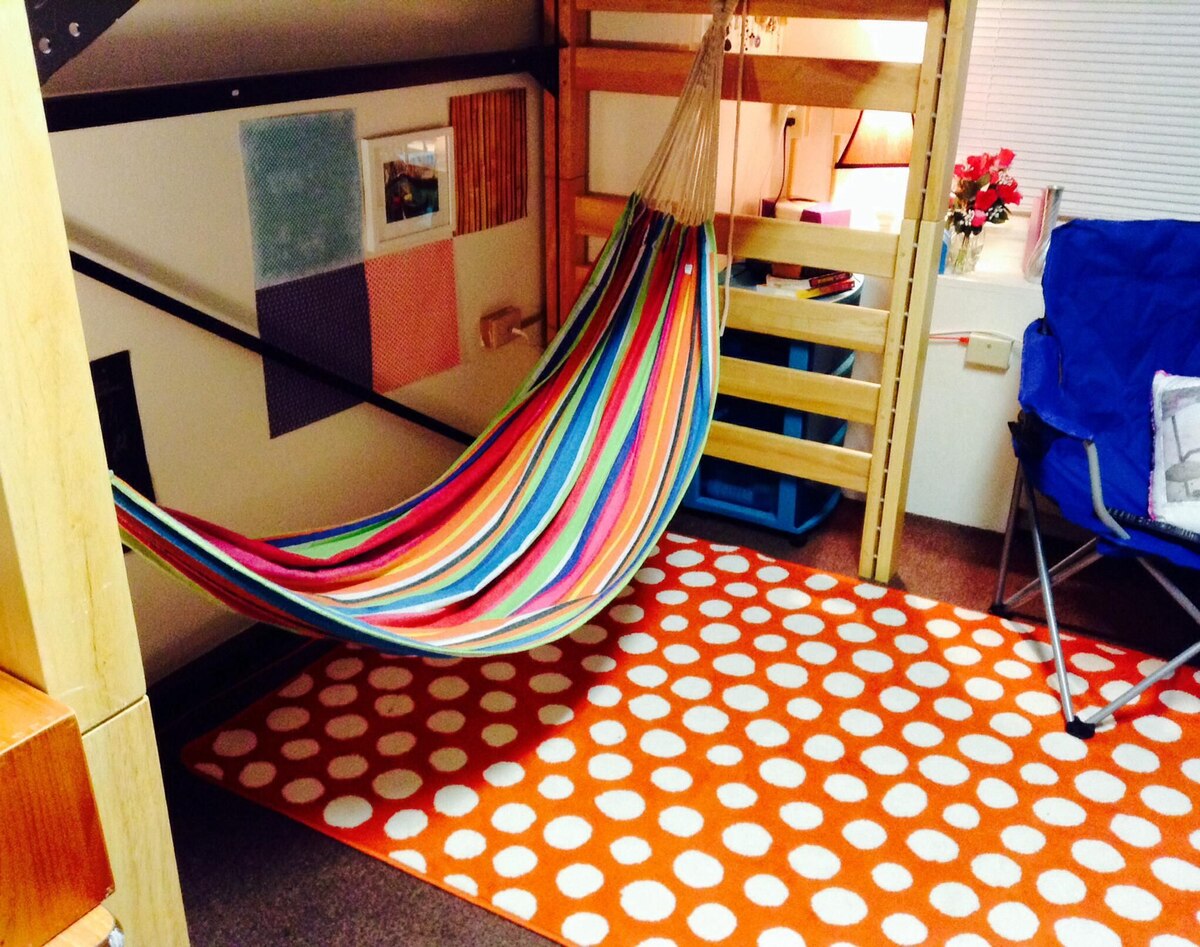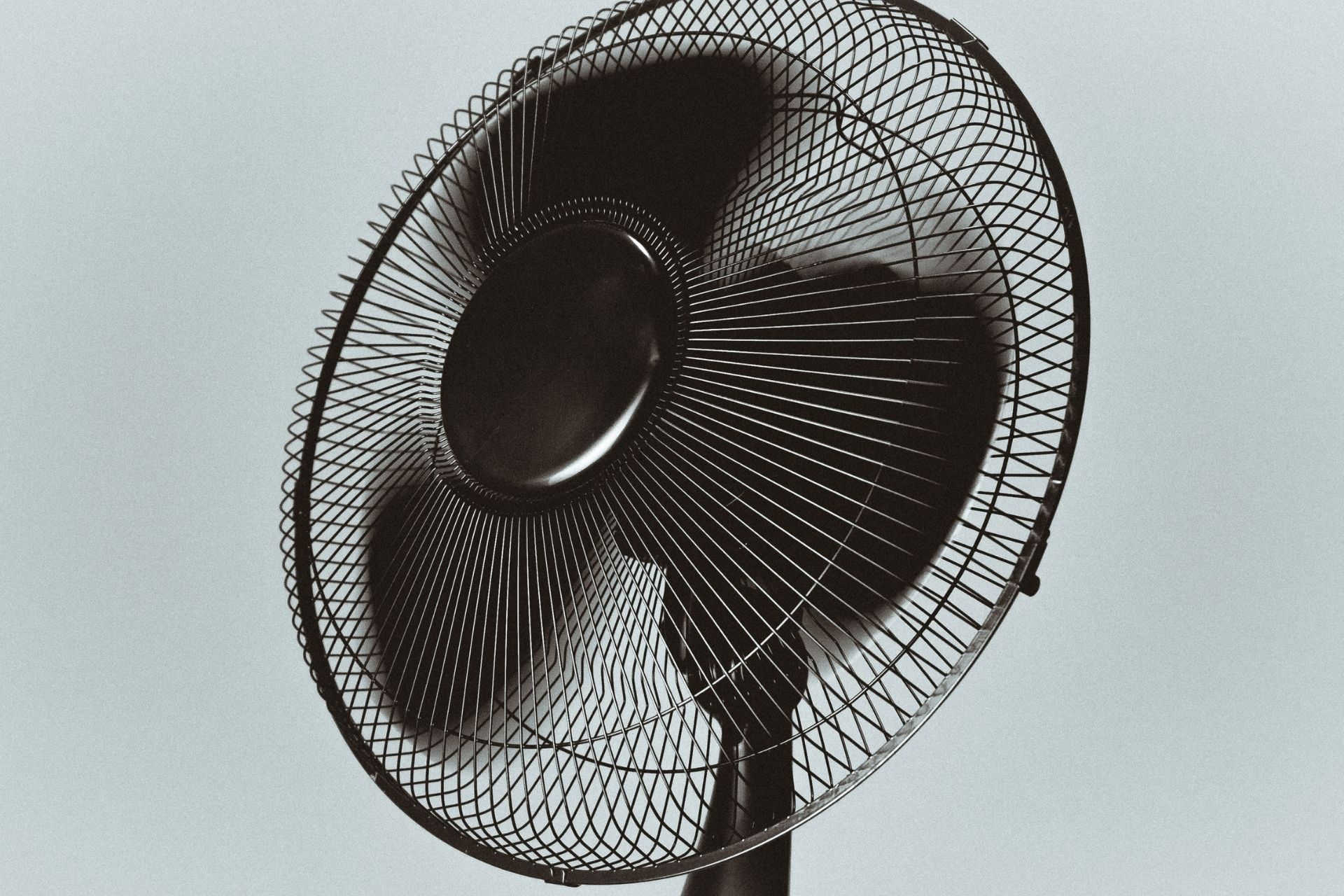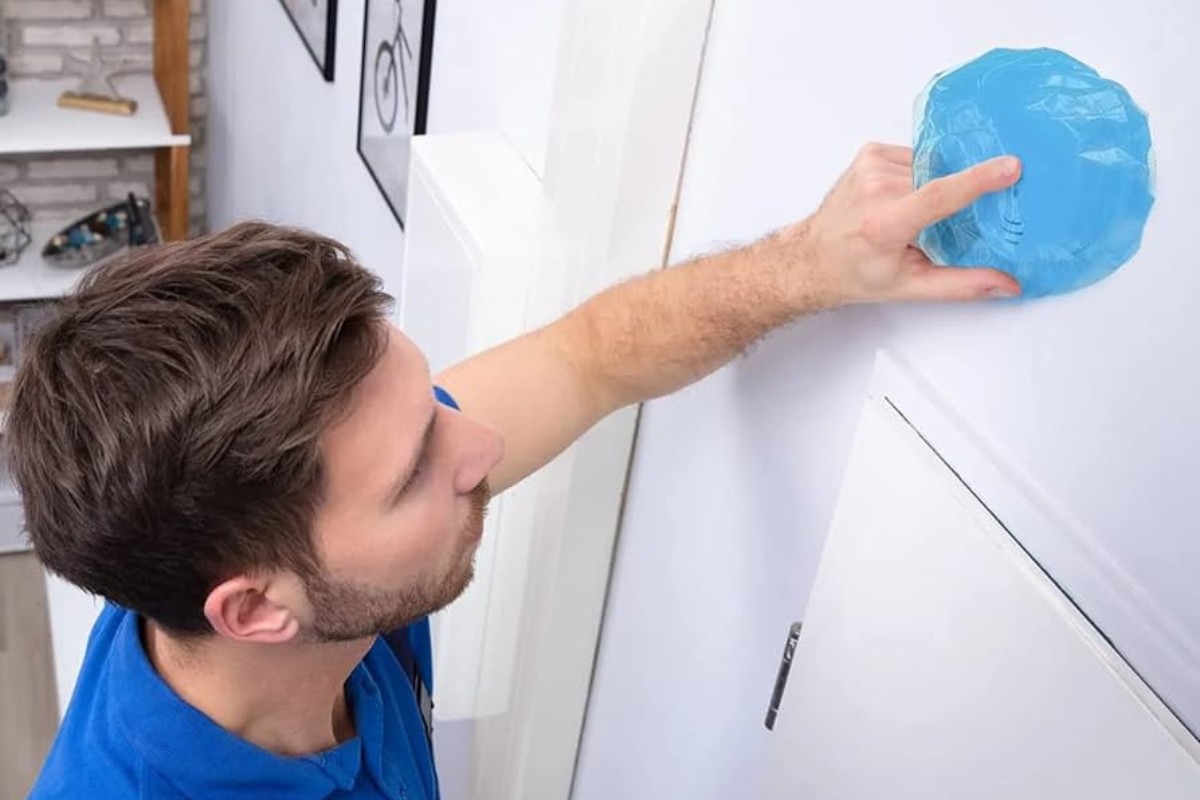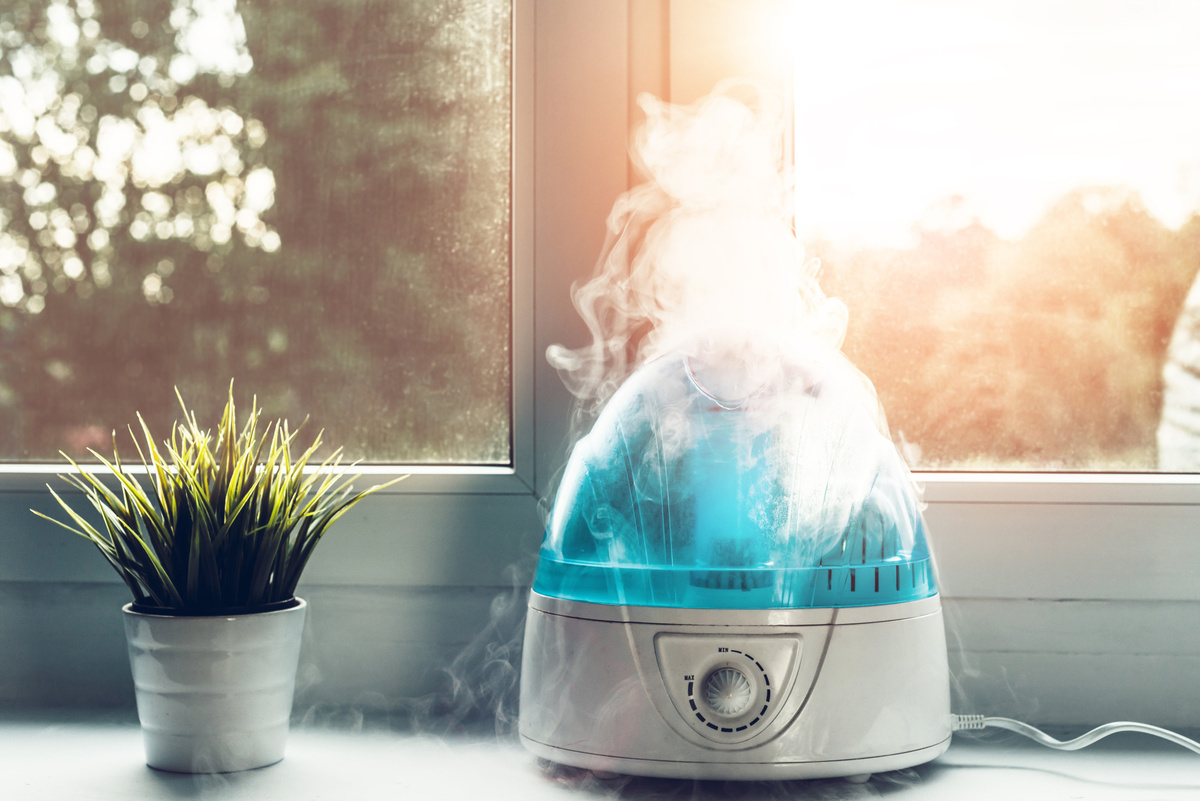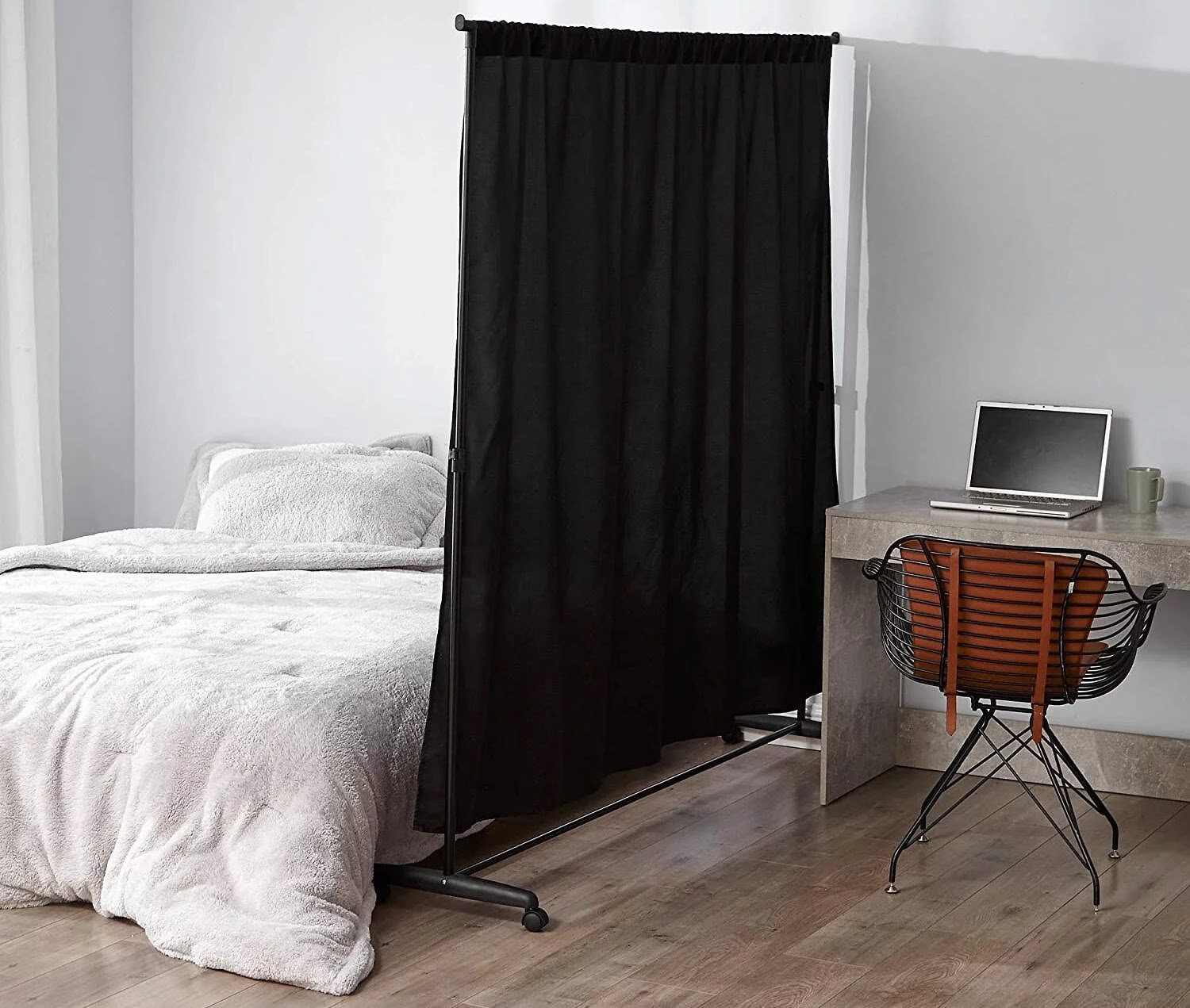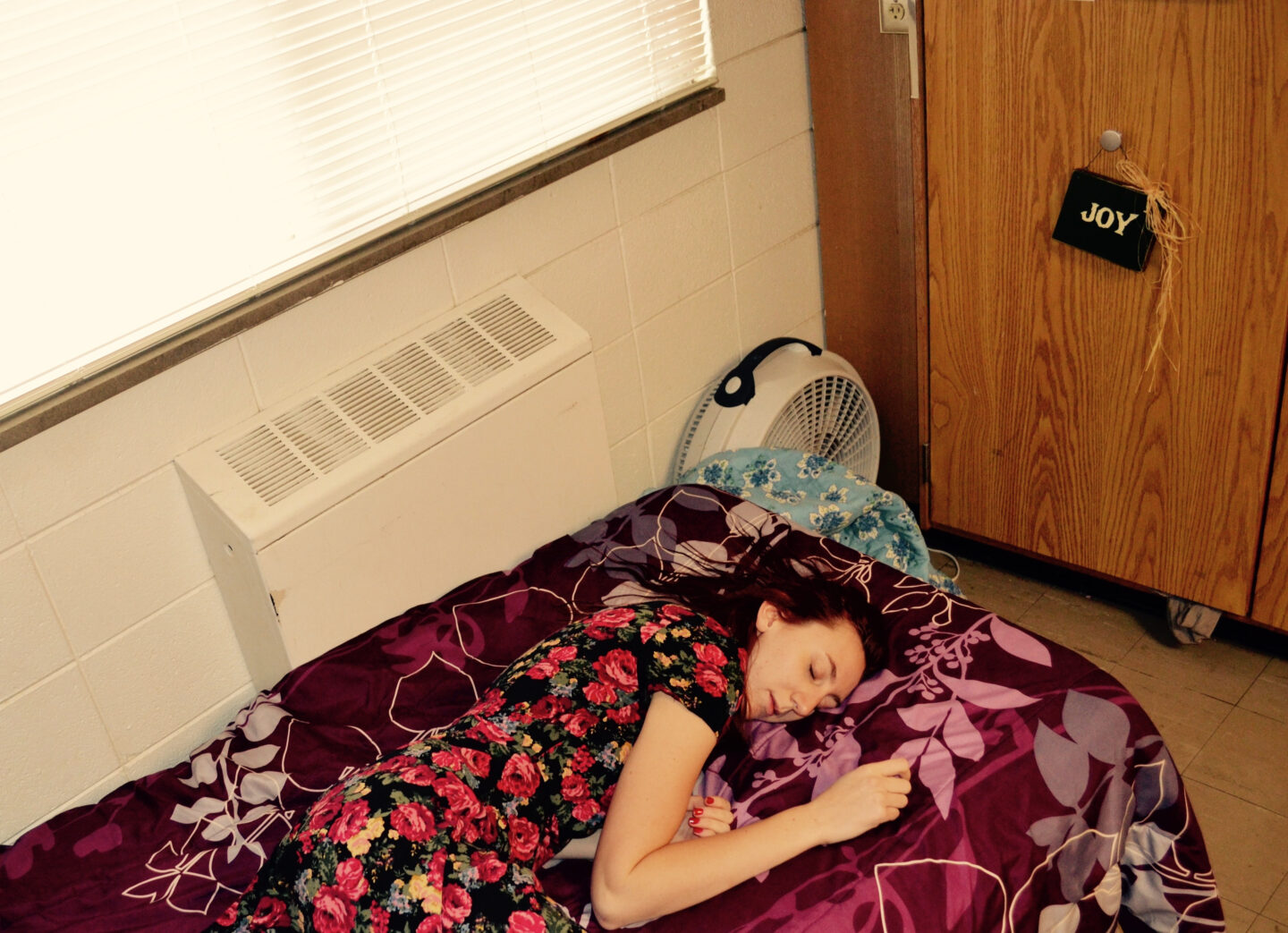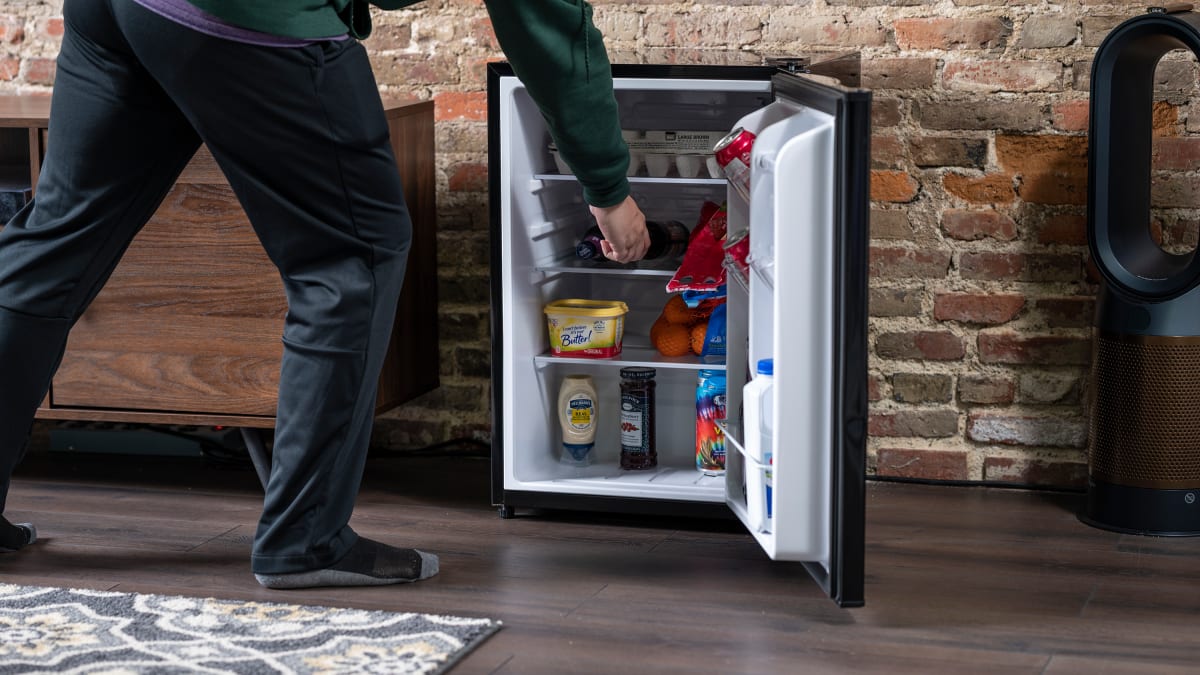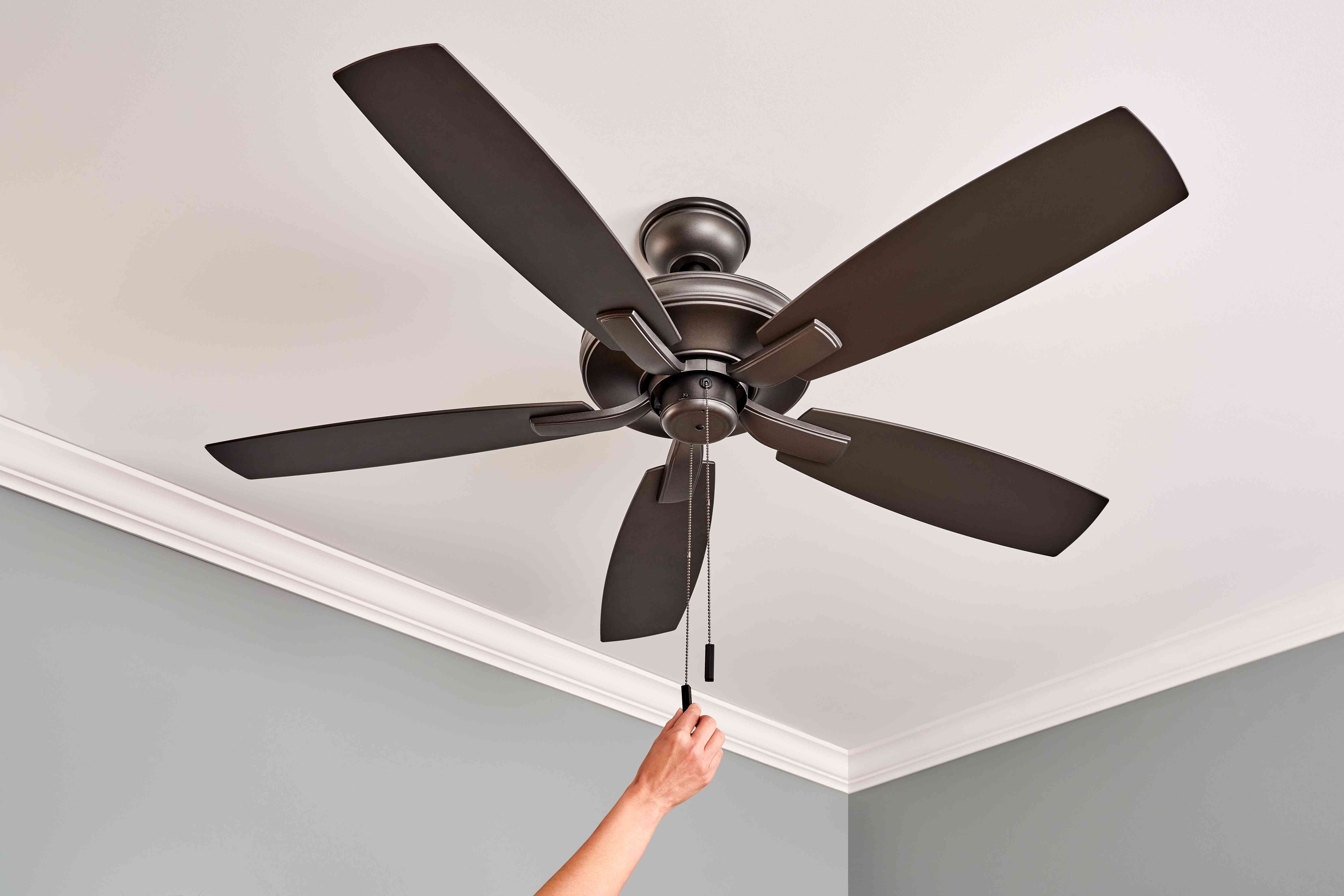Home>Home Maintenance>How To Cool A Dorm Room Without Air Conditioning
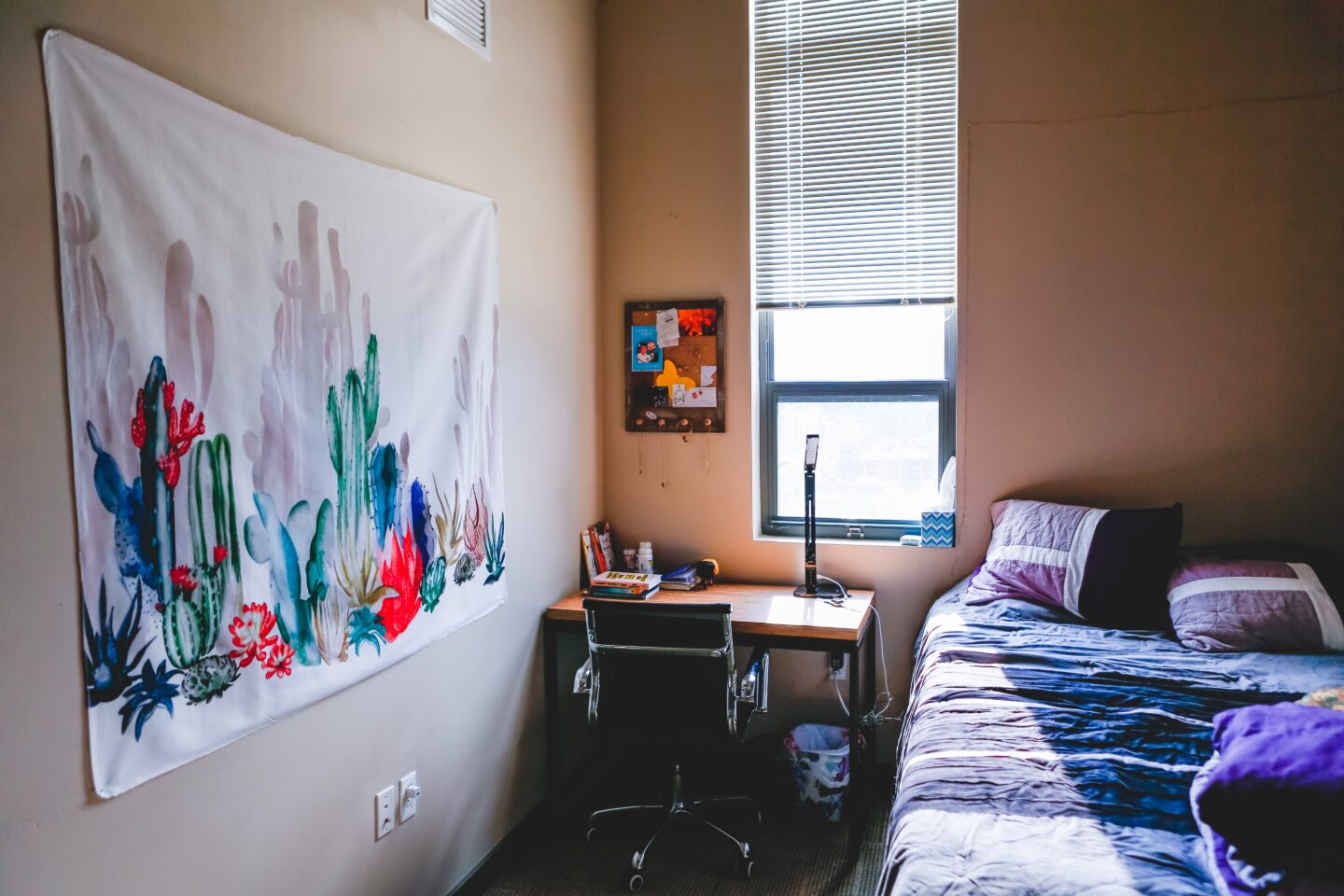

Home Maintenance
How To Cool A Dorm Room Without Air Conditioning
Modified: March 6, 2024
Learn effective home-maintenance techniques to cool your dorm room without relying on air conditioning.
(Many of the links in this article redirect to a specific reviewed product. Your purchase of these products through affiliate links helps to generate commission for Storables.com, at no extra cost. Learn more)
Introduction
Welcome to the ultimate guide on how to cool a dorm room without air conditioning. While air conditioning can provide much-needed relief during hot summer months, it may not be the most feasible option for everyone, especially those living in dormitories or on a tight budget. But don’t worry, there are various effective strategies and techniques you can employ to keep your dorm room cool and comfortable without the need for air conditioning.
Utilizing natural ventilation is an excellent way to cool down your dorm room. Opening windows and doors to create a cross breeze allows fresh air to flow in and stale air to exit. If your dorm room has windows that can be safely left open, take advantage of this natural cooling method.
Another option is to use window film or shades to block out direct sunlight. This can help reduce the amount of heat that enters your room, keeping it cooler throughout the day. Additionally, creating cross ventilation by strategically opening windows on opposite sides of the room can facilitate airflow and cool down the space.
Fans can be incredibly effective in cooling a room without air conditioning. Ceiling fans are a popular choice as they can provide consistent air circulation. If your dorm room does not have a ceiling fan, portable fans like box fans, tower fans, or desk fans are excellent alternatives. Experiment with their placement to maximize airflow, whether it’s directing cool air towards your bed or positioning fans near windows to draw in fresh air.
If you’re feeling a bit more adventurous, you can try creating your own DIY air cooler. This involves using materials like a cooler, ice, and a fan to create a makeshift air conditioning system. With step-by-step instructions readily available online, this can be a fun and cost-effective way to cool your dorm room.
In addition to ventilation and fans, optimizing your bedding can make a significant difference in keeping your dorm room cool. Choose breathable fabrics for your sheets and pillowcases, such as cotton or bamboo, which allow for better airflow. Consider investing in a cooling mattress topper to regulate your body temperature while you sleep. And during the summer months, opt for lightweight sheets and blankets to avoid trapping excess heat.
Key Takeaways:
- Keep your dorm room cool without air conditioning by using natural ventilation, fans, DIY air coolers, and optimizing bedding. Minimize heat sources, stay hydrated, and create a cool sleeping environment for a comfortable and eco-friendly living space.
- Utilize ice and cold water to cool down your dorm room without air conditioning. Experiment with different methods and stay creative to find what works best for your comfort.
Utilize Natural Ventilation
One of the simplest and most effective ways to cool a dorm room without air conditioning is by utilizing natural ventilation. Opening windows and doors allows fresh air to enter your room and helps to circulate stagnant, warm air out.
Start by opening windows on opposite sides of the room to create a cross breeze. This allows cool air to flow in from one direction while warm air is pushed out from the other. By strategically positioning fans near open windows, you can further enhance the circulation of air.
Another option to consider is using window film or shades. Reflective window film can block out a significant portion of the sun’s heat, helping to keep your dorm room cooler. Alternatively, shades made from materials with UV-blocking properties can provide similar benefits.
In addition, creating cross ventilation can significantly improve the airflow in your dorm room. This involves opening windows or doors on opposite sides of the room to take advantage of natural air currents. By doing so, you can create a continuous flow of fresh air throughout your space, reducing the temperature and creating a more comfortable environment.
It’s important to note that while natural ventilation is an effective cooling method, it may not be suitable in all situations. If you live in an area with high outdoor temperatures or poor air quality, it’s best to exercise caution and consider alternative cooling options.
Overall, utilizing natural ventilation is a cost-effective and energy-efficient way to keep your dorm room cool without air conditioning. Experiment with different window and door configurations to find the best setup for optimal airflow in your space.
Use Fans Effectively
When it comes to cooling a dorm room without air conditioning, fans can be your best friends. They are affordable, portable, and provide instant relief from the heat. By strategically using different types of fans, you can create a comfortable and breezy environment in your dorm room.
Ceiling fans are a great option for cooling larger spaces. They are typically installed in the center of the room and circulate air throughout the space. By running your ceiling fan in a counterclockwise direction during the summer months, you can create a wind-chill effect that helps cool the room. Additionally, using the fan in conjunction with open windows can help draw in fresh air and improve airflow.
If your dorm room doesn’t have a ceiling fan, don’t worry! There are plenty of portable fans available that can effectively cool smaller spaces. Box fans are versatile and can be placed on the floor or mounted in a window to draw in cool air from outside. They can also be positioned near your bed to create a personal cooling zone.
Tower fans are slimmer and more compact, making them ideal for small rooms with limited space. They provide powerful airflow and often come with features like oscillation and remote control for added convenience. Place a tower fan in a strategic location to create a cross breeze and keep your dorm room cool.
For even more portability, desk fans are a great option. They are small enough to sit on your desk or nightstand, providing a gentle breeze wherever you need it most. Desk fans also often come with adjustable speed settings, allowing you to customize the airflow to your liking.
Experiment with different fan placements to find the most effective cooling setup for your dorm room. Consider combining multiple fans to create a cooling system that meets your specific needs. Remember to adjust fan settings according to your comfort level and turn them off when not in use to conserve energy.
By using fans effectively, you can significantly improve the airflow and ventilation in your dorm room, creating a more comfortable living space without the need for air conditioning.
Create a DIY Air Cooler
If you’re feeling adventurous and want to take cooling your dorm room to the next level, creating a DIY air cooler can be a fun and effective option. This simple project requires a few materials and can provide a noticeable decrease in temperature.
Here’s what you’ll need:
- A small insulated cooler
- A small fan (preferably one that fits on top of the cooler)
- A PVC pipe or flexible air duct
- An ice pack or a container for ice cubes
Now, let’s get started with the step-by-step instructions:
- Begin by cutting a hole in the top of the cooler to fit the size of your fan. Make sure to measure and mark the hole accurately to ensure a snug fit.
- Next, cut another hole on the side of the cooler to fit the PVC pipe or flexible air duct. This will serve as the air inlet.
- Attach the fan securely onto the top hole of the cooler. You can use zip ties, duct tape, or any other method that keeps the fan in place.
- Connect the PVC pipe or flexible air duct to the side hole of the cooler. This will serve as the air outlet.
- Fill the ice pack or container with ice cubes and place it inside the cooler.
- Turn on the fan and adjust the speed settings to your preference.
The concept behind this DIY air cooler is simple. The fan draws in the warm air from the room through the PVC pipe or air duct, which passes over the ice pack or container of ice cubes, cooling the air. The chilled air is then pushed out of the cooler, effectively lowering the room temperature.
Make sure to keep an eye on the ice pack or container and replace the ice as needed to maintain the cooling effect.
It’s important to note that while a DIY air cooler can provide relief from the heat, it may not have the same cooling power as an air conditioner. However, this creative solution can still make a noticeable difference in the comfort of your dorm room.
Remember to exercise caution when working with electrical appliances and ensure that all components are securely in place. Safety should always be a top priority when undertaking DIY projects.
Enjoy the satisfaction of creating your own air cooler and staying cool in your dorm room without the need for expensive cooling systems!
Optimize Your Bedding
When it comes to keeping your dorm room cool, optimizing your bedding can play a significant role. The right bedding choices can help regulate your body temperature and ensure a comfortable night’s sleep, even without air conditioning.
Here are some tips to optimize your bedding for a cooler dorm room:
Choose breathable fabrics: Selecting bedding made from breathable fabrics such as cotton or bamboo can make a world of difference. These natural fibers allow for better airflow, preventing heat from getting trapped and keeping you cool throughout the night. Look for bed sheets, pillowcases, and duvet covers made from these breathable materials.
Use cooling mattress toppers: Investing in a cooling mattress topper can provide added relief from nighttime heat. These toppers are made with materials that wick away moisture and regulate body temperature, allowing for a cooler and more comfortable sleep surface. Look for options with cooling gel-infused memory foam or breathable fabrics for optimal results.
Use lightweight sheets and blankets: During the summer months, swapping out heavy comforters or thick blankets for lightweight options can make a significant difference in your comfort level. Choose sheets and blankets made from lightweight materials such as linen or cotton percale. These fabrics are breathable and help promote airflow, keeping you cooler as you sleep.
Consider moisture-wicking fabrics: If you tend to sweat during the night, consider using bedding made from moisture-wicking fabrics. These materials are designed to pull moisture away from the body and evaporate it quickly, helping to cool you down. Look for bedding labeled as moisture-wicking or with advanced cooling technologies.
Remember to wash your bedding regularly to keep it fresh and free from sweat and allergens that can affect your sleep quality. Additionally, consider using a mattress protector that is breathable and allows air to circulate, as this can help prevent heat buildup.
By optimizing your bedding with breathable fabrics, cooling mattress toppers, and lightweight sheets and blankets, you can create a more comfortable and cool sleep environment in your dorm room.
Don’t underestimate the power of a good night’s sleep in a cool and comfortable bed. Your body will thank you!
Keep the Sun Out
One of the most effective ways to keep your dorm room cool without air conditioning is to minimize the amount of sunlight that enters the space. Direct sunlight can significantly increase the temperature in a room, turning it into a heat trap. By keeping the sun out, you can create a cooler and more comfortable environment.
Use blackout curtains or blinds: Installing blackout curtains or blinds is an excellent way to block out sunlight and heat. These window coverings are made from thick, light-blocking materials that prevent sunlight from entering the room. When properly installed and closed, blackout curtains or blinds can significantly reduce heat gain, helping to keep your dorm room cool. Choose dark-colored curtains or blinds for better light absorption and heat reflection.
Invest in reflective window coverings: Reflective window coverings, also known as window films or window coatings, are designed to reflect sunlight and heat away from your room. These coverings have a reflective surface on the outside, which helps bounce back the sun’s rays. This prevents heat from entering your dorm room, keeping it cooler. Look for window coverings specifically labeled as reflective or energy-efficient to ensure you get the desired cooling effect.
Consider window tinting or UV-blocking film: Another option to keep the sun out and cool down your dorm room is to apply window tinting or UV-blocking film to your windows. These films are transparent and can be easily installed on the inside of your windows. They work by blocking harmful UV rays and reducing heat gain while still allowing natural light to enter. Window tinting or UV-blocking film can be an effective solution to maintain a cooler temperature without compromising the view or aesthetics of your dorm room.
It’s important to make sure that your window coverings are properly fitted and sealed to prevent any gaps for sunlight to sneak through. Additionally, it’s beneficial to keep your curtains or blinds closed during the hottest parts of the day to maximize the cooling effects.
By using blackout curtains or blinds, reflective window coverings, or window tinting/UV-blocking film, you can effectively keep the sun out and create a cooler dorm room. This not only helps maintain a comfortable living space but also reduces the need for air conditioning, saving energy and reducing your carbon footprint.
Use a fan to circulate air and create a cross breeze. Keep blinds or curtains closed during the day to block out the sun’s heat. Place a bowl of ice in front of the fan for an extra cooling effect.
Minimize Heat Sources
When it comes to keeping your dorm room cool, it’s important to minimize heat sources as much as possible. By reducing the amount of heat generated within your space, you can help maintain a cooler environment without the reliance on air conditioning. Here are some tips to minimize heat sources in your dorm room:
Turn off unnecessary electronics: Electronic devices generate heat when in use, so it’s important to turn off any unnecessary electronics when not in use. This includes turning off your computer, television, gaming consoles, and other devices. If you’re not actively using them, power them down completely or put them on standby mode to minimize heat generation.
Use energy-efficient light bulbs: Traditional incandescent light bulbs emit a significant amount of heat when they’re turned on. Consider replacing them with energy-efficient options such as LED or CFL bulbs. These types of bulbs consume less energy and produce much less heat, making them a great choice for maintaining a cooler dorm room.
Avoid using heat-generating appliances: Certain appliances such as stoves, ovens, and toasters produce a significant amount of heat. To keep your dorm room cool, try to avoid using these appliances as much as possible. Instead, opt for quick and easy meal options that don’t require cooking or use alternative cooking methods such as a microwave or slow cooker, which generate less heat.
Unplug chargers and power adapters: Even when electronic devices are not actively being used, chargers and power adapters still draw power and generate heat. Get into the habit of unplugging chargers and power adapters when not in use to minimize unnecessary heat generation and also save energy.
Minimize the use of hot water: Taking long, hot showers can contribute to the heat buildup in your dorm room. Opt for shorter and cooler showers to help keep the overall temperature down. Additionally, consider using energy-efficient showerheads that regulate water temperature and flow, reducing the amount of hot water used.
By being mindful of the heat sources in your dorm room and taking steps to minimize them, you can significantly decrease the temperature and create a cooler living space without air conditioning. These simple changes can contribute to a more comfortable and energy-efficient environment.
Stay Hydrated
When it comes to keeping cool in your dorm room without air conditioning, staying hydrated is crucial. Hydration not only helps regulate your body temperature but also ensures overall well-being during hot weather. Here are some tips to stay hydrated and cool:
Drink plenty of water: Drinking an ample amount of water throughout the day is essential for staying properly hydrated. Carry a water bottle with you and make it a habit to take regular sips. Opt for cold water to provide instant cooling relief from the heat. Avoid excessive consumption of sugary or caffeinated drinks as these can dehydrate you even further.
Use a water mister or spray bottle: Another way to cool down is by using a water mister or spray bottle. Fill it with cool water and mist yourself periodically to lower your body temperature. You can also mist your face, neck, and arms to help you feel refreshed during hot and humid periods. Alternatively, you can dampen a towel with cool water and place it on your forehead or neck for a similar cooling effect.
Take cool showers or use wet towels: Taking cool showers or using wet towels can help lower your body temperature and provide immediate relief from the heat. If you feel overheated, take a quick cool shower to cool down your body. Alternatively, you can soak a towel or cloth in cool water, wring it out slightly, and place it on your neck or forehead. Repeatedly dampening the towel can prolong the cooling sensation.
Choose hydrating snacks: Incorporate hydrating foods into your diet to supplement your water intake. Fruits such as watermelon, cucumbers, and oranges are high in water content and can help keep you hydrated. These snacks not only provide essential nutrients but also offer a refreshing and hydrating treat.
Remember, staying hydrated is essential for your overall well-being, especially in hot weather. It helps regulate body temperature, improves cognitive function, and prevents dehydration. By drinking plenty of water, using a water mister or spray bottle, and taking cool showers or using wet towels, you can stay cool, refreshed, and hydrated in your dorm room without air conditioning.
Utilize Ice and Cold Water
If you’re searching for additional ways to cool down your dorm room without air conditioning, utilizing ice and cold water can provide immediate relief from the heat. Here are some methods you can employ:
Create a DIY air conditioner with ice: One creative way to cool your dorm room is by creating a DIY air conditioner using ice. Fill a shallow container, such as a baking dish, with ice and place it in front of a fan. As the air blows over the ice, it will create a cooling effect, lowering the temperature in the immediate vicinity. This simple and inexpensive trick can provide a noticeable drop in temperature.
Use cold water bottles or ice packs: Another effective method is to use cold water bottles or ice packs to cool yourself down. Fill a water bottle with cold water and place it in the freezer. Once frozen, you can use it as a cold compress by applying it to pulse points on your wrists, neck, or forehead. Similarly, placing an ice pack or a bag of ice cubes wrapped in a towel on areas such as the back of your neck or head can help lower your body temperature and provide relief from the heat.
Place a bowl of ice in front of a fan: If you don’t have access to ice or cold water bottles, placing a bowl of ice in front of a fan can have a similar cooling effect. The air blowing over the ice will become cooler, creating a refreshing breeze. This method is particularly useful during hot summer nights when you need some relief while sleeping.
Remember to use caution when handling ice and ensure that any containers you use are stable and leak-proof. It’s also essential to monitor the ice or cold water to avoid any accidents or spills.
Utilizing ice and cold water can be a cost-effective and efficient way to cool your dorm room without air conditioning. These methods provide immediate relief from the heat and can make a significant difference in your overall comfort level.
Experiment with different techniques to find the cooling method that works best for you. Stay cool and beat the heat!
Read more: How To Organize A Dorm Room
Create a Cool Sleeping Environment
Getting a good night’s sleep is vital, especially when trying to cool down your dorm room without air conditioning. Creating a cool sleeping environment can make a world of difference in ensuring a restful and comfortable night. Here are some tips to achieve a cool sleeping environment:
Use a cooling pillow: Investing in a cooling pillow can greatly enhance your sleeping experience. These pillows are specifically designed to regulate temperature and provide a cooler surface for your head and neck. Cooling pillows often use materials like gel-infused memory foam or breathable fabrics to help dissipate heat and keep you cool throughout the night.
Freeze your pillowcase: To further enhance the cooling properties of your pillow, try freezing your pillowcase. Place your pillowcase in a plastic bag and leave it in the freezer for a couple of hours before bedtime. When it’s time to sleep, put the chilled pillowcase on your pillow. The frozen fabric will offer an instant cool sensation that can help to lower your body temperature and improve your sleep quality.
Use a cooling eye mask: Keep your eyes cool and refreshed with a cooling eye mask. These masks are typically filled with gel or have a cooling gel insert that provides a soothing and cooling effect to the delicate eye area. Wear the eye mask before bed to reduce puffiness and inflammation, while also keeping your face cool during the night.
Choose breathable pajamas: Opt for lightweight and breathable pajamas made from natural fibers like cotton or bamboo. These materials allow for better air circulation, preventing sweat and promoting a cooler sleep. Avoid wearing tight or synthetic fabrics that can trap heat and moisture against your skin.
Use a fan or white noise machine: Position a fan near your bed to create a gentle breeze that can help keep you cool while you sleep. If you’re sensitive to noise, consider using a white noise machine to drown out any background sounds and promote a calm and soothing sleeping environment.
Additionally, it’s important to keep your dorm room as dark as possible by using blackout curtains or blinds to block out any unwanted sunlight. This will help maintain a cooler temperature and create a suitable sleep environment.
By implementing these strategies, you can transform your dorm room into a cool and comfortable sanctuary for a good night’s sleep. Remember, quality sleep is essential for your overall well-being, so prioritize creating a cool and inviting sleep environment.
Conclusion
Keeping your dorm room cool without air conditioning is not only possible but also affordable and environmentally friendly. By utilizing natural ventilation, using fans effectively, creating DIY air coolers, optimizing your bedding, keeping the sun out, minimizing heat sources, staying hydrated, and utilizing ice and cold water, you can significantly lower the temperature in your dorm room and create a more comfortable living space.
Open windows and doors to allow for natural airflow and cross ventilation. Use fans strategically to circulate air and create a refreshing breeze. Consider creating a DIY air cooler using simple materials like a fan and ice. Optimize your bedding with breathable fabrics, cooling mattress toppers, and lightweight sheets and blankets. Keep the sun out by using blackout curtains or blinds, reflective window coverings, or window tinting. Minimize heat sources by turning off unnecessary electronics, using energy-efficient light bulbs, and avoiding heat-generating appliances. Stay hydrated by drinking plenty of water and using a water mister or spray bottle. Utilize ice and cold water by creating a DIY air conditioner, using cold water bottles or ice packs, or placing a bowl of ice in front of a fan. Finally, create a cool sleeping environment by using a cooling pillow, freezing your pillowcase, and using a cooling eye mask.
Remember to experiment with different methods and combinations of strategies to find what works best for your dorm room and personal preference. Each individual’s cooling needs may vary, so don’t be afraid to get creative and find what keeps you most comfortable and cool.
By implementing these tips and techniques, you can create a more enjoyable environment in your dorm room without relying on air conditioning. Not only will you be able to beat the heat, but you’ll also save energy and reduce your environmental footprint.
So embrace the challenge, get creative, and enjoy a cool and comfortable dorm room throughout the hot summer months!
Frequently Asked Questions about How To Cool A Dorm Room Without Air Conditioning
Was this page helpful?
At Storables.com, we guarantee accurate and reliable information. Our content, validated by Expert Board Contributors, is crafted following stringent Editorial Policies. We're committed to providing you with well-researched, expert-backed insights for all your informational needs.
